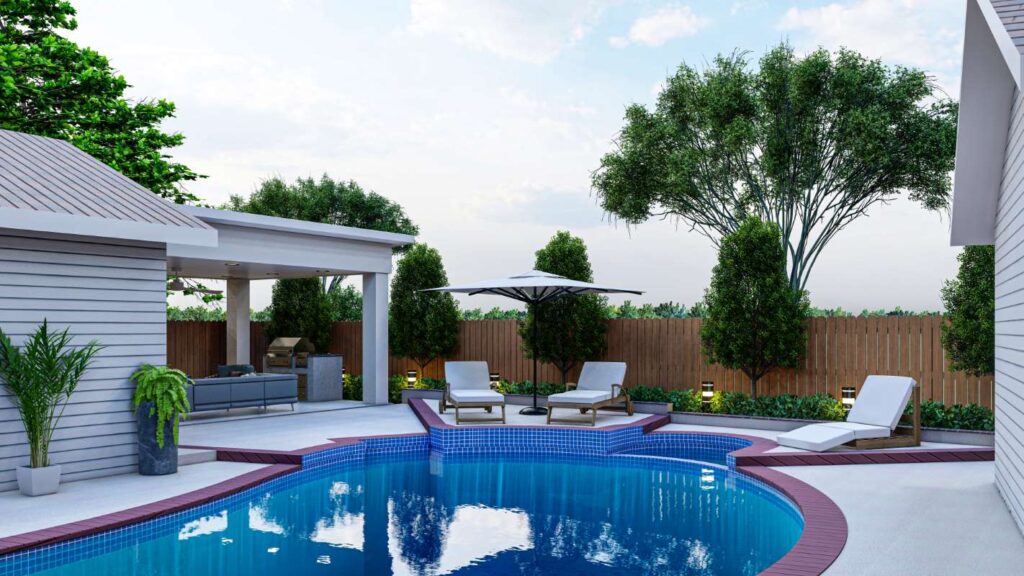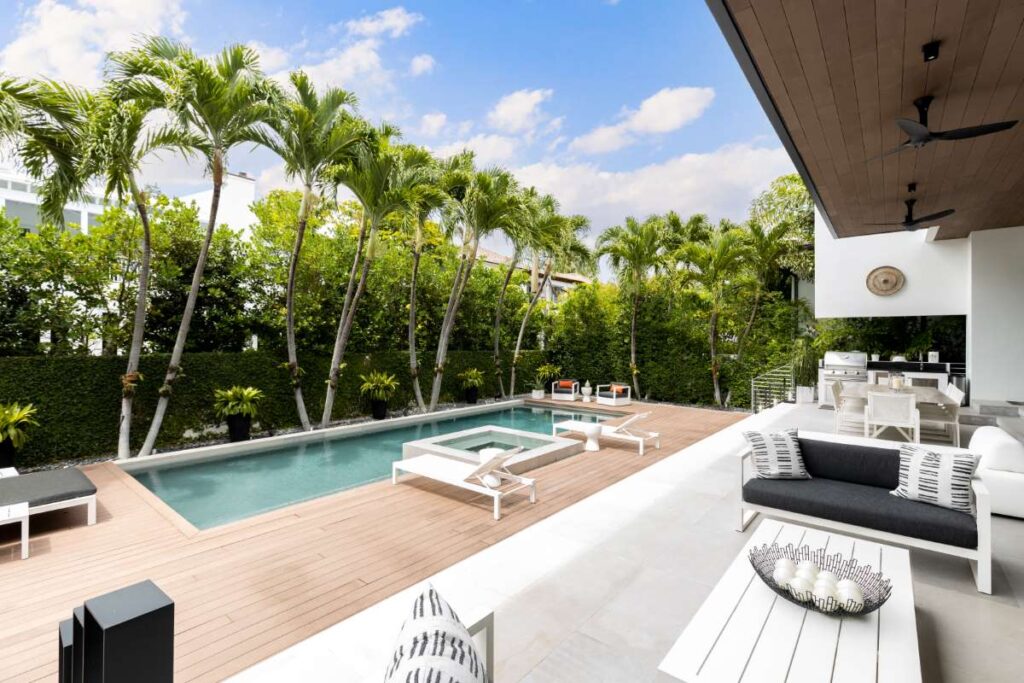Chlorine vs. Saltwater Pools: Maintenance Differences Explained
Explore the essential differences in maintenance between chlorine and saltwater pools to decide which option is best for you and your swimming needs.
When it comes to maintaining a swimming pool, the choice between chlorine and saltwater systems is one that many pool owners must make. Both options offer unique benefits and challenges, and understanding these differences can help you make an informed decision for your backyard oasis. In this comprehensive guide, we will delve into the specifics of chlorine and saltwater pools, examining their maintenance requirements, costs, and overall usability. By the end, you will have a better grasp of which option suits your lifestyle and preferences best.
Introduction to Chlorine and Saltwater Pools
Chlorine pools have been the traditional choice for residential and commercial swimming facilities for decades. In this system, chlorine is added directly to the water, either in liquid, granule, or tablet form, to maintain a safe and sanitary swimming environment. Chlorine works by killing bacteria and neutralizing contaminants that can affect water quality. On the other hand, saltwater pools use a salt-chlorine generator to produce chlorine from the salt dissolved in the water. This process significantly reduces the need for manual chlorine additions. While saltwater pools are often perceived as low-maintenance, they still require specific attention and care. Understanding these systems’ individual characteristics can help you decide which is the best fit for your needs.
Chlorine Pool Maintenance
– Regular Chlorine Testing: One of the most crucial aspects of maintaining a chlorine pool is regular testing of the chlorine levels. Ideally, free chlorine levels should be between 1-3 ppm (parts per million). Using test strips or a liquid testing kit, you can easily monitor these levels. – Chemical Balancing: Besides chlorine, you will need to regularly balance other chemicals like pH (ideal range 7.2-7.6), alkalinity, and calcium hardness. This balancing act ensures your pool remains clear and safe for swimming. An imbalance can lead to issues such as cloudy water, algae growth, or irritation for swimmers. – Shock Treatments: Shocking your pool, or adding a higher dose of chlorine, is necessary every few weeks or after heavy use. This process helps remove organic contaminants and restore chlorine levels to a healthy range.- Filtration and Cleaning: Regularly cleaning the filter and skimming leaves and debris from the pool surface is essential. Chlorine pools generally require a more hands-on approach to ensure cleanliness. – Cost and Supplies: Chlorine can be relatively inexpensive, but costs can add up depending on water quality and local pricing. Keep in mind that you will need to purchase chlorine products regularly, as well as other balancing chemicals and cleaning supplies.
Saltwater Pool Maintenance
– Lower Chlorine Levels: One of the primary advantages of saltwater pools is the continuous generation of chlorine. Typically, saltwater pools maintain a lower chlorine level of about 2-4 ppm. This can lead to a more comfortable swimming experience, as higher chlorine levels can irritate skin and eyes.- Salt Levels Monitoring: In a saltwater pool, you need to monitor salt levels rather than chlorine levels. Ideal salinity is generally between 2700-3400 ppm. Salt testing strips or electronic testers can help ensure that your pool remains within this range.- Cell Cleaning: The salt-chlorine generator cell needs periodic cleaning to remove calcium buildup. This process usually involves soaking the cell in a mild acid solution. Depending on water hardness and usage, this may need to be done every few months.- Equipment and Replacement: Saltwater pools can be easier to maintain overall, but they do require specific equipment, including a salt-chlorine generator, which may need replacement every 3-5 years. Additionally, the salt can be corrosive, which may lead to more frequent equipment repairs and replacements.- Cost Considerations: Although higher initial setup costs for a saltwater system exist, their maintenance can be less expensive in the long run due to lower chemical costs. You’ll need to purchase salt and some balancing chemicals, but the need for regular chlorine purchases is eliminated.
Comparing the Maintenance Efforts
When deciding between chlorine and saltwater pools, it’s essential to weigh the maintenance effort required for each system.- Ease of Use: Saltwater pools are often praised for being more user-friendly. Once the initial setup is complete, they typically require less frequent chemical additions. Chlorine pools, however, demand more ongoing attention and diligence.- Long-Term Maintenance: Over time, saltwater pools may incur higher initial investments due to the cost of the generator and potential for corrosion. However, many owners find the ongoing costs of chlorine—especially during peak seasons—can add up. Consider your long-term budget when choosing.- Chemical Handling: Handling chlorine can be hazardous if not done correctly. While salt is generally safer, it’s essential to ensure the generator is properly maintained to avoid complications.- Water Quality: Saltwater pools often provide a softer swimming experience, making it attractive for families with children or individuals with sensitive skin. Conversely, chlorine pools can lead to a more pronounced chemical smell and potential skin irritation.
Best Practices for Maintenance
Regardless of your choice, adhering to best practices will ensure your pool remains a refreshing retreat:1. Regular Testing: Make it a habit to test your pool water at least once a week, adjusting chemicals as necessary. 2. Consistent Cleaning: Skim the pool regularly, vacuum debris, and clean tiles to maintain aesthetics and hygiene.3. Seasonal Maintenance: Before the swimming season, perform a thorough clean and check all equipment. At the end of the season, properly winterize your pool to prevent damage.4. Professional Help: If pool maintenance seems overwhelming, consider hiring a professional service, especially if you are considering
pool routes for sale to start your own maintenance business.
Conclusion
In summary, both chlorine and saltwater pools have unique maintenance requirements that can significantly impact your swimming experience. Chlorine pools demand more frequent testing and chemical balancing, while saltwater pools offer a more automated and user-friendly approach. Ultimately, your choice will depend on your lifestyle, budget, and personal preferences.As you explore options for pool routes, consider how a well-maintained pool—whether chlorine or saltwater—can enhance customer satisfaction and your overall business. For those interested in starting a pool service, checking out
pool routes for sale in your area could be a great step towards a rewarding investment in the pool maintenance industry. Whichever option you choose, understanding the maintenance differences between chlorine and saltwater pools will help you keep your swimming area clean, safe, and inviting for friends and family. Don’t hesitate to reach out to professionals or resources for additional guidance tailored to your situation.



